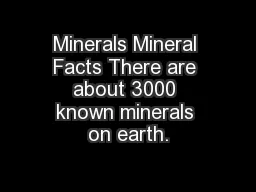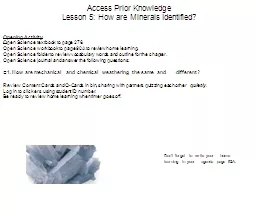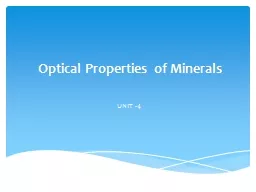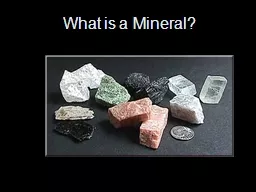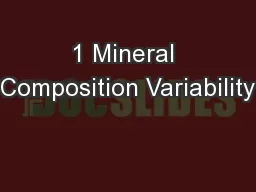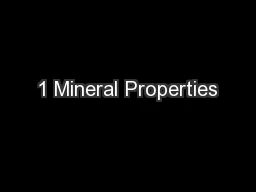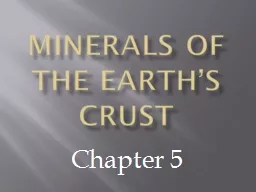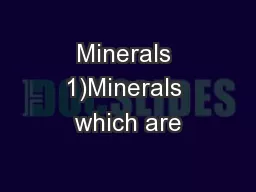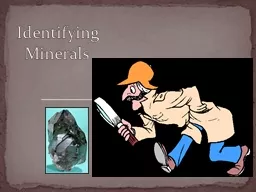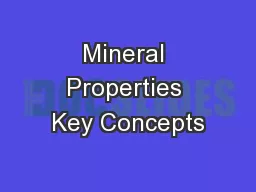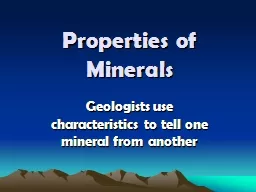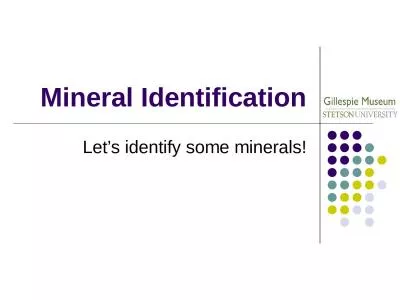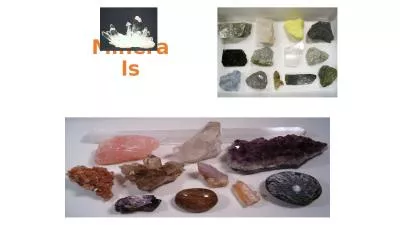PPT-Minerals Mineral Facts There are about 3000 known minerals on earth.
Author : marina-yarberry | Published Date : 2018-09-20
All rocks are made up of 2 or more of these minerals Minerals are not rocks Silicon and oxygen are the most abundant elements in the crust and in minerals Oxygen
Presentation Embed Code
Download Presentation
Download Presentation The PPT/PDF document "Minerals Mineral Facts There are about 3..." is the property of its rightful owner. Permission is granted to download and print the materials on this website for personal, non-commercial use only, and to display it on your personal computer provided you do not modify the materials and that you retain all copyright notices contained in the materials. By downloading content from our website, you accept the terms of this agreement.
Minerals Mineral Facts There are about 3000 known minerals on earth.: Transcript
Download Rules Of Document
"Minerals Mineral Facts There are about 3000 known minerals on earth."The content belongs to its owner. You may download and print it for personal use, without modification, and keep all copyright notices. By downloading, you agree to these terms.
Related Documents

